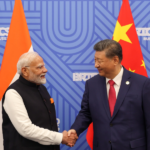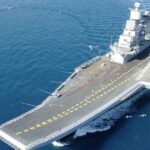
Tanks have been destroyed by the thousands on Ukraine’s battlefields. Yet no major army is contemplating abandoning the tank altogether
By Vikas Gupta
Defence News of India, 19th Aug 24
When Russian tanks lined up on the border with Ukraine in February 2022, experts harked back to the Soviet invasions of Hungary in 1956 and Czechoslovakia in 1968. Once again, Moscow’s expectations were a quick seizure of the Ukrainian capital, Kyiv, and the replacement of Ukraine’s recalcitrant government with a more pliant one that received and obeyed orders from the Kremlin.
Such an ending is nowhere in sight. Instead, the war rages on and Russia’s President Vladimir Putin may be closer to an exit than his Ukrainian counterpart, Volodymyr Zelenskyy.
Russia’s vaunted military, especially its mechanised forces, lie battered and scattered while social media networks are filled with videos of charred carcasses and deadly attacks on Russian tanks.
According to British specialist site, Warspotting, 2,796 Russian tanks have been destroyed as on July 01 this year.
Thus exposed, the question of the tank’s vulnerability is a grave concern for India, where the Defence Research and Development Organisation (DRDO) is engaged in developing two new tanks: a 25-tonne light tank for the mountains, and a 50-tonne main battle tank (MBT) for the deserts and plains!!
Battlefield bully
This inevitably raises questions about whether the dominance of the MBT – the bully of the battlefield since the Somme campaign in 1916 – has ended. Given its paramountcy over the battlefield, military planners have relentlessly devoted resources and attention to countering the tank’s three battle-winning attributes – mobility, protection and firepower.
The mobility of most tanks stems from a tracked suspension, which enables it to move fast and freely across slush, trenches, minefields, barbed-wire and other battlefield obstacles.
Crew protection is ensured by the tank’s armour, up to half a metre thick in vulnerable spots. This provides the crew protection from rifle and machine gun fire and artillery shelling.
Firepower, the tank’s ultimate power attribute, comes mainly from its 125 mm main gun and 7.62 mm co-axial machine gun.
More than a century after they first appeared in World War 1, tanks still rely on the same three attributes, albeit with vastly improved capabilities.
The death of the tank was first predicted in the lead-up to World War 2 when armour-piercing warheads became reliable and affordable. It was written off again when infantrymen were equipped with shoulder-fired, anti-tank guided missiles (ATGMs). A third wave of sceptics arose with the use of technology for protection, rather than mere armour plating.
However, instead of quietly fading away at any of these junctures, new developments in tank design made the MBT even more lethal. Israel’s contemporary Merkava tanks have the Trophy protective system that has a 360-degree radar that detects incoming anti-tank projectiles and intercepts or kills them with short-range explosive charges before they can reach the tank.
The Ukraine killing field
Armoured warfare experts have identified several human and technical reasons for why Russian tanks sustained such heavy damage in Ukraine.
Simple, but deadly, First Person View (FPV) drones are the most evident reason. The pilot gets to fly these drones from the perspective of someone sitting in the cockpit. FPV drones are transformed into weapons by strapping on explosives, or anti-tank rocket heads, to attack MBTs. Control of their speed and trajectory makes it possible to target the most vulnerable points on the tanks, which is an advantage over the missile.
FPV drones have catalysed the emergence of ultra-fast, armour penetrating, anti-tank missiles. These caused heavy casualties on Russian tanks at the start of the war.
Another reason for Russia’s enormous tank casualties has been the network of anti-tank obstacles and trenches that Russian tanks encountered as they entered the Ukrainian heartland. Ukrainians had prepared for a Russian tank invasion since the First Crimean war in 2014 by digging trenches and installing anti-tank obstacles.
Meanwhile, Russian tanks have fallen prey to ATGMs that allow even light infantry to take on a tank. Over the duration of the war, MBTs have become more discreet and have moved away from the front line. Camouflaged under vegetation or in buildings, they are performing several viable missions.
First, tanks have resumed supporting the infantry in rapid, targeted action. In doing so, the tank will have reappropriated its First World War function.
A second role for the tank is indirect fire, using an artillery spotter if necessary. Ukrainian tanks have failed in many cases to even knock down a building with direct fire. Indirect fire has achieved greater success.
Next, tank formations are working to develop ways of working through anti-tank minefields, which have tended to freeze the battlefront.
Although tanks were designed for direct combat, their heavy frontal armour and firepower has meant that very few tanks experienced combat in Ukraine. “Nobody can move forward in the open anymore,” says one tank expert.
“No, the tank is not dead, but you have to use it well,” said a colonel from a European country’s armoured forces. Destroyed by the thousands on Ukraine’s battlefields, the use of the tank has changed in Ukraine. Its architecture is being reviewed by several countries, but no major army is yet contemplating abandoning the tank altogether.
[ENDS]






